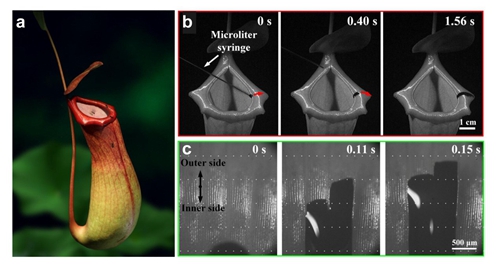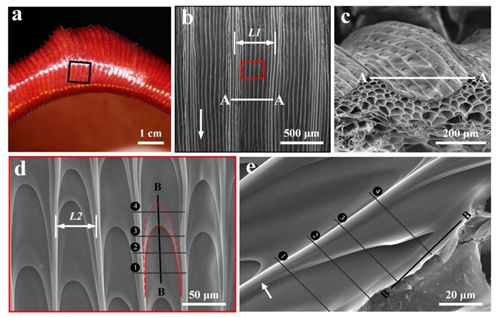
The carnivorous plant Nepenthes alata captures insects when they 'aquaplane' on the wet rim, or peristome, of the plant's pitcher organ. Slippery surfaces have been designed to mimic the structure and behaviour of the natural peristome surface, but questions remain about the mechanism underlying its function.
The scientists from the Beihang University and the Technical Institute of Physics and Chemistry of the Chinese Academy of Sciences studied the prey-trapping pitcher organs of the carnivorous plant Nepenthes alata. They found that continuous, directional water transport occured on the surface of the ‘peristome’—the rim of the pitcher, a result of multi-scale structure features involving periodic duck-billed micro-cavities with arch-shaped open edges.
These features optimize capillary rise in the transport direction and prevent back-flow by pinning in place any water front moving in the reverse direction. This produces unidirectional flow despite the absence of any gradient in surface energy, and much faster transport than previously observed with asymmetrically structured surfaces.
Thanks to the gift from the Nepenthes Alata, the researchers anticipate that the basic ‘design’ principles underlying this behaviour could be used to develop artificial fluid-transport systems with practical applications.
Their discovery was published in Nature on Apr. 6, 2016.

a) Optical images of a pitcher of N. alata. b,c) Directional water transport on the peristome surface from inside to outside (Image by CHEN Huawei et al.)

Periodically asymmetrical microstructures on the peristome surface (Image by CHEN Huawei et al.)

86-10-68597521 (day)
86-10-68597289 (night)

52 Sanlihe Rd., Xicheng District,
Beijing, China (100864)

